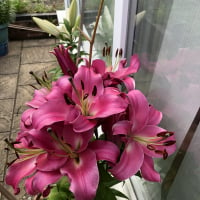This Forum will close on Wednesday 27 March, 2024. Please refer to the announcement on the Discussions page for further detail.
Large garden planting advice
 Ilikeplants
Posts: 894
Ilikeplants
Posts: 894
i have a large garden and I’m trying to keep it low maintenance. It takes half a day just to mow it. And today I’ve been tackling the snowberry bushes which keep coming back in two areas of my border and just looks untidy. I want more colour and easy maintenance and at the moment have lavatera in the garden providing colour. Philadelphus was nice but the flowers didn’t last long. What other shrub is easy for impact in large gardens that I can repeat down the length of it? Lavender? Rudebekia? It’s parts of the garden that has to look after itself without my help other than pruning back or chopping down but has long lasting colour. I didn’t want to do dahlia yet there as I’d probably forget to water or deadhead it there. Any suggestions welcome.
0
Posts
Plus get someone else in to mow the lawn!
Camellias, Rhododendrons and Azaleas are lovely for colour in the first half of the year and low-maintenance but need acidic soil.
Pieris is a great option too, lovely vibrant colour and low-maintenance shrubs.
Think about shape/structure too for adding interest. For example, some 'tropical' looking plants such as trachycarpus add interest because of the leaf shape. Topiary might be an idea too with slower-growing varieties that only need light pruning every now and then.
Lastly think about movement; as an earlier comment suggested grasses which are low-maintenance but also provide interest with movement and how it plays with the light.
Have fun!
Along the lines of low maintenance perennials that are very dependable, Geranium maccorhizum, Geranium 'Rozanne' and 'Anne Thompson', Persicaria amplexicaulis ('Firetail', 'Rosea' etc) and Sedums e.g. Sedum 'Matrona' are right up there. Roses can be low maintenance too, there are groundcover types which can be hacked back as desired, and tough shrub roses like Rosa 'Rosarie De l'Hay'.
It will be a long and sometimes seem a slow process but one that can be enjoyed along the way. Mine is still evolving after 36 years! Good luck